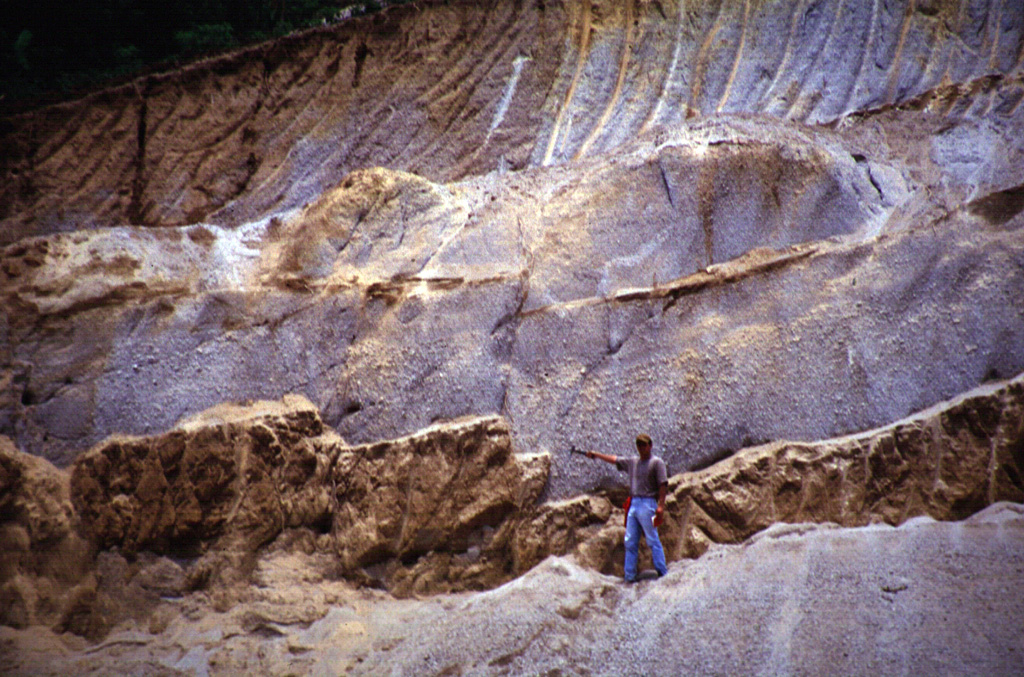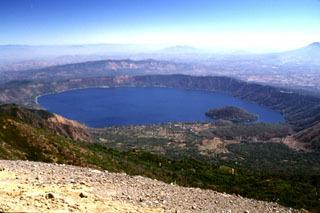Image GVP-07264

The thick light-colored unit the volcanologist is pointing to is the Arce fall deposit, overlying a paleosol and mafic ash and scoria deposits. This outcrop is about 15 km NW of the caldera rim. The biotite-rich rhyolitic Arce pumice-fall deposit was erupted from Coatepeque caldera about 72,000 years ago and was associated with formation of the SW part of the caldera. Deposits of the 84,000-year-old Los Chocoyos Ash from Atitlán caldera in Guatemala lie about 3 m below the base of the Arce deposit, but are not visible in this photo.
Photo courtesy of Carlos Pullinger, 1996 (Servicio Nacional de Estudios Territoriales, El Salvador).
![]() This image is made available under the Creative Commons BY-NC 4.0 license terms.
This image is made available under the Creative Commons BY-NC 4.0 license terms.
Keywords: pumice | tephra | stratigraphy | geology | outcrop | scoria

Coatepeque Caldera
